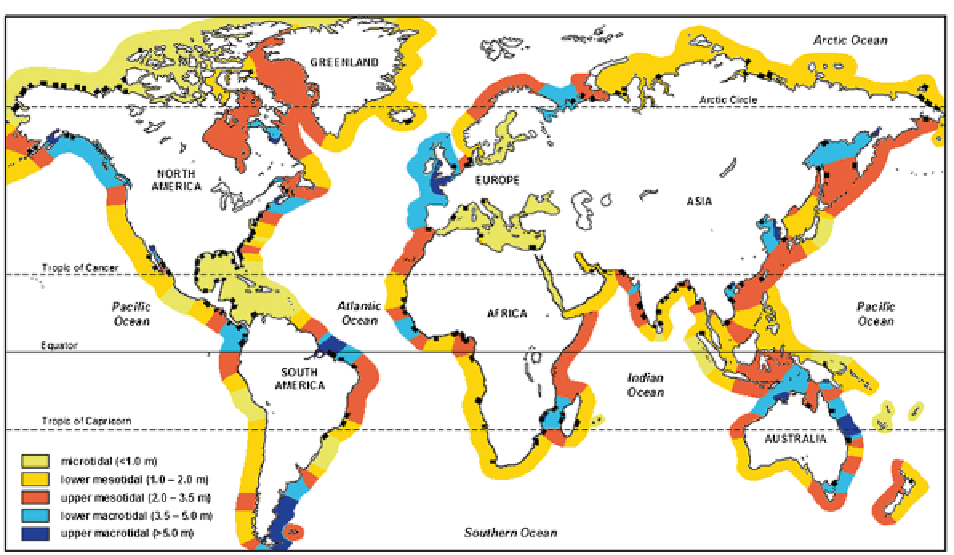Geology Reference
In-Depth Information
Fig. 10.1
Global distribution of coastal barriers backed by tidal flats and/or lagoons (Amended after Pilkey
2003
) in relation to tidal
regime (Modified after Flemming
2005
)
Boothroyd et al.
1985
), and extensively vegetated
intertidal flats (Pestrong
1972
; Frey and Basan
1985
),
in particular comprising cordgrass (
Spartina sp.
)
marshes or mangrove forests. The stratigraphy and
facies successions of these latter systems are distinctly
different from those of typical non-vegetated, back-
barrier tidal flat systems (Kraft et al.
1979
), of which
the Ria Formosa along the Algarve coast of Portugal
(Pilkey et al.
1989
) is a partial and the Wadden Sea
lining the coasts of The Netherlands, Germany and
Denmark a prime example (Bartholdy and Pejrup
1994
;
Flemming and Davis
1994
; Oost and de Boer
1994
).
A comprehensive global inventory and classifica-
tion of barred tidal flat systems is currently still
lacking, but as most are associated with coastal
barrier systems, the amended global map of the latter
(Fig.
10.1
) provides a reasonable, if incomplete, pic-
ture of their geographic distribution. From Fig.
10.1
it is clearly evident that barrier islands and other types
of barred coasts are not evenly distributed along the
shores of the world, the vast majority being associ-
ated with low-lying coastal plains (~72%) and river
deltas (~28%) (Pilkey
2003
). In the context of global
tectonics, 49% of barrier islands are located along
trailing-edge coasts, 24% along collision coasts, and
27% along marginal sea coasts (Glaeser
1978
).
Furthermore, of those located along trailing-edge
coasts, 75% occur along amero-trailing-edge, 19%
along afro-trailing-edge, and only 6% along neo-
trailing-edge coasts. These barrier systems occupy
12-13% of the world's shoreline, the greater part
being represented by the lagoonal type where fring-
ing intertidal flats are heavily vegetated by cordgrass
(from subtropical to boreal climates) or mangrove
forests (from subtropical to tropical climates), bare
intertidal flats being reduced to narrow belts along
tidal channels.
The unique nature of bare tidal flat landscapes had
already been recognized by the Roman geographer
Pliny the Elder (ca. AD 45) who, after having person-
ally visited the Wadden Sea coast, describes it in his
epochal geographic compendium “Historia Naturalis”
as an immeasurable expanse of land inundated twice a
day by sea water and of which it was uncertain whether
it formed part of the land or the sea. Proper tidal flat
research, however, merely dates back to the first part of

